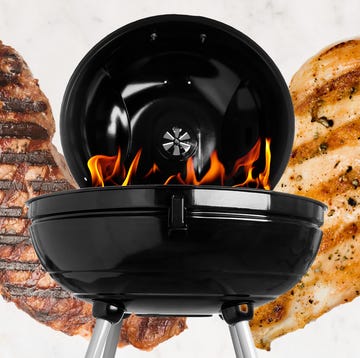Neither the Paleo nor the Keto (short for "ketogenic") diets are new, but there's been a huge surge in Google searches for both of them over the past year. That's likely because certain extremely fit and good-looking celebrities swear by these meal plans: Jessica Biel and Channing Tatum have long sworn by the Paleo method, while Kourtney Kardashian and Vinny Guadagnino are more recent Keto converts.
Anyway, you've also likely Googled one or both of these diets recently, so here we are. Below, a full breakdown of what each actually is, as well as the differences between the two.
What is the Keto diet?
In order to commit to keto, about 80 percent of your diet has to become fats and you need to consume little-to-no carbohydrates, as well as an adequate amount of protein. That's because you're trying to reach "nutritional ketosis," or a "a state of health in which your body is efficiently burning fat as its primary fuel source instead of glucose," according to NutritionalKetosisForHealth.com.
The point of eliminating carbs and adding tons of fats is to force the body straight to ketosis instead of working through sugar first. So, yeah, things like cheese, mayo, cream, bacon, and butter are not only allowed but are encouraged. Other fun things (like pastas and fruits) are strictly forbidden.
The primary goal of the diet is weight loss.
What is the Paleo diet?
Paleo is focused on eliminating foods that are bad for digestion — that means no dairy, no grains, no legumes, no processed sugar. Basically, if a prehistoric human couldn't find or make it, its off-limits for the duration of the diet.
So what are the main differences?
- The Paleo diet isn't staunchly opposed to carb intake. That means fruits, as well as starchy veggies are all fair game with Paleo, whereas the Keto diet forbids carbs in almost all forms.
- The Paleo Diet also doesn't require a huge uptick in fat intake. Your meals can primarily be fruits and vegetables with minimal added fats and you can still be properly adhering to Paleo.
- Dairy is cool on Keto. Again, it's encouraged, as long as it's high in fats. Paleo puts its foot down when it comes to anything in the realm of dairy.
- Keto has a specific goal. That goal is to change your body's functioning processes. Paleo is less rigid in that its generally just meant to improve a person's health.
- Keto also requires keeping closer track of what you're eating. Whereas you can just eat caveman-y foods and know you're adhering to the Paleo diet, Keto gives you the ~80% fat guideline.
Are these diets safe?
Neither diet has been without its fair share of controversy. The Keto diet, in particular, has nutritionists worried about the glorification of carb elimination. It raises concerns around disordered eating, as well as its actual effectiveness (most of the weight you'll lose while trying to reach ketosis is water weight). Professionals' qualms with Paleo are less, but still legit: the diet doesn't consider that humans have evolved since our caveman days and, therefore, require a more thorough nutritional intake.
Follow Delish on Instagram.















